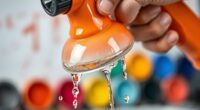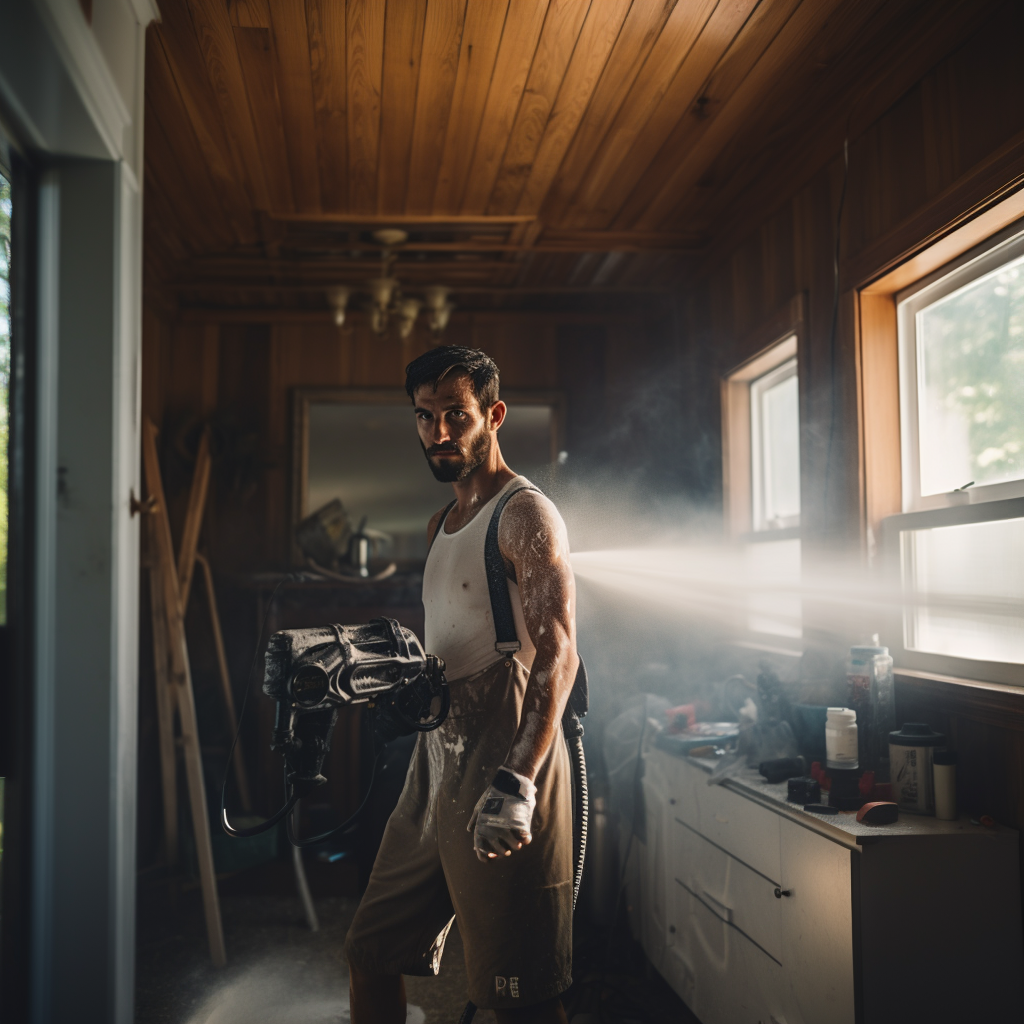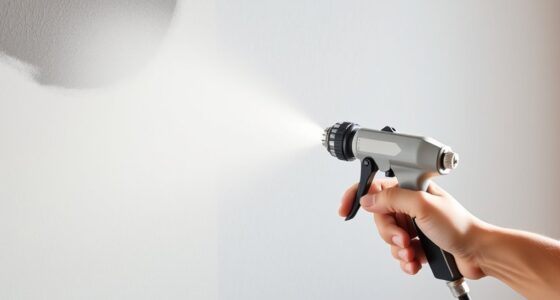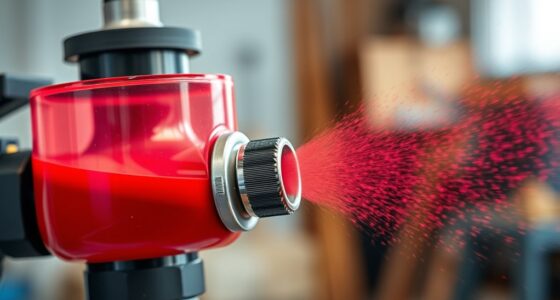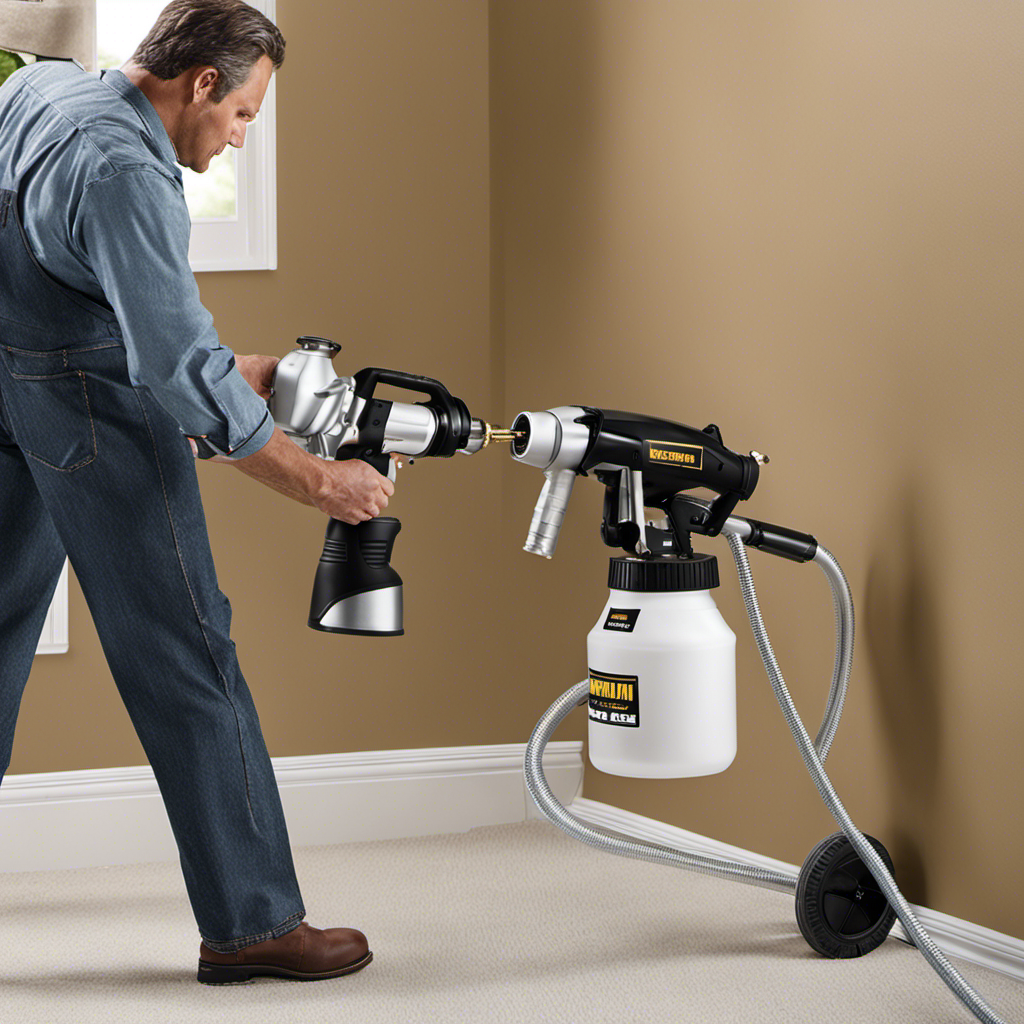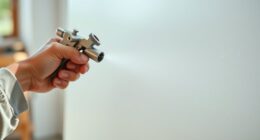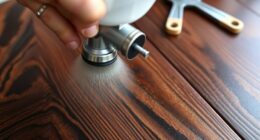Yes, you can definitely use a paint sprayer to apply primer, which often results in a smoother, more even coat on large surfaces. Just guarantee the primer is properly thinned according to the manufacturer’s instructions, especially if you’re using an HVLP or airless sprayer. Adjust your spray pattern and pressure for ideal coverage, and test on a small area first. For detailed tips and techniques, keep exploring how to achieve the best results.
Key Takeaways
- Yes, paint sprayers can be used to apply primer effectively if properly thinned and prepared.
- Ensure your sprayer type (airless or HVLP) is suitable for primer viscosity and follow manufacturer guidelines.
- Thinning primer improves sprayability, prevents clogging, and ensures even coverage.
- Proper equipment setup, including cleaning and correct spray pattern, is essential for a smooth finish.
- Test spray on a small area to adjust settings and achieve optimal application before covering large surfaces.
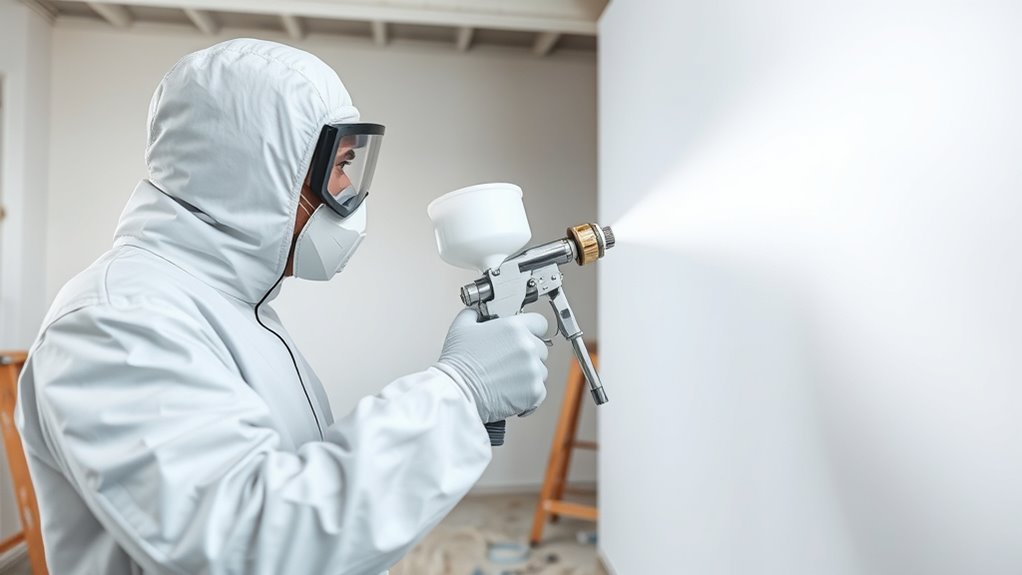
Are you looking for an efficient way to apply primer evenly and quickly? Using a paint sprayer can be a great option, but it’s essential to understand how to do it properly. One of the key factors to consider is primer thickness. If the primer is too thick, it can clog the sprayer or lead to uneven coverage. Conversely, if it’s too thin, it may not adhere well or provide the proper base coat. To guarantee smooth application, you might need to thin your primer according to the manufacturer’s instructions. This step helps achieve the right consistency for spraying, making the process more efficient and reducing the risk of drips or runs. It’s important to test the primer’s flow by spraying a small area first, adjusting the thinning as needed to match the spray pattern and coverage.
Another critical aspect is sprayer compatibility. Not all paint sprayers are suitable for primer, especially when it comes to thicker formulations. Airless sprayers generally handle primer better because they can manage higher viscosity materials without clogging. However, they require a sprayer with a compatible tip size—typically a larger tip opening—to prevent blockages. HVLP (High Volume Low Pressure) sprayers are designed for thinner paints and may struggle with thicker primers unless they are thinned properly. Always check your sprayer’s specifications and the manufacturer’s recommendations to confirm whether it’s compatible with primer. Using an incompatible sprayer can lead to inconsistent coverage, clogs, or damage to the equipment.
Preparation is also crucial. Before you start, clean your sprayer thoroughly to remove any residual paint or debris. Use the appropriate cleaning agents based on your sprayer type, and double-check that all parts are in good working order. When applying primer, maintain a consistent distance from the surface—usually around 12-18 inches—to achieve an even coat. Keep your spray strokes smooth and overlapping slightly to avoid streaks or missed spots. If you’re working on large surfaces, consider using a spray gun with a wide spray pattern to speed up the process.
Frequently Asked Questions
What Types of Primer Are Compatible With Paint Sprayers?
When considering primer compatibility with paint sprayers, you’ll want to focus on sprayer types suitable for various primer formulations. Airless sprayers work well with thicker, latex, or oil-based primers, while HVLP sprayers handle thinner primers like shellac or lacquers. Always check your sprayer’s specifications and the primer’s viscosity to guarantee compatibility. Properly strain and thin primers if needed, to avoid clogging and achieve a smooth, even coat.
How Do I Clean My Paint Sprayer After Applying Primer?
Imagine you’re back in the days of the Wright brothers, tinkering with planes. To clean your paint sprayer after primer, use proper cleaning techniques. First, flush the system with mineral spirits or water, depending on your primer type. Then, disassemble and scrub the parts with a brush. Proper primer removal guarantees your sprayer stays in top shape, avoiding clogs and ensuring smooth future applications.
Can I Use a Paint Sprayer for Textured Primer Finishes?
You can use a paint sprayer for textured primer finishes, but you need to consider texture applications and primer thickness. A sprayer handles textured primers well, creating even coats for a professional look. However, thicker primers may clog the system, so thinning the primer appropriately is essential. Adjust your sprayer settings for ideal flow and coverage, ensuring the textured finish is consistent and smooth.
What Safety Precautions Should I Take When Spraying Primer?
Think of spraying primer like releasing a cloud of potential hazards. You should wear protective gear, including a mask, goggles, and gloves, to shield yourself from fumes and overspray. Ensure proper ventilation by opening windows and using fans, which helps clear airborne particles. Follow safety precautions diligently, like reading the manufacturer’s instructions, to keep yourself safe and your workspace secure while achieving a smooth, professional finish.
How Do I Adjust the Spray Pattern for Primer Application?
To adjust the spray pattern for primer application, first check your sprayer’s nozzle and dial. Turn the adjustment knob or switch to narrow for detailed work or wider for covering large areas. Make sure the primer is compatible with your sprayer and properly thinned if needed. Test the spray pattern on a scrap surface, ensuring even coverage without drips. Proper spray pattern adjustment helps achieve smooth, professional results.
Conclusion
Yes, you can definitely use a paint sprayer to apply primer. Think of it as your trusty brush, but in a faster, more efficient form—like giving your project a smooth, even coat that glides on effortlessly. Just make sure to adjust the sprayer for the right consistency and distance. With a little practice, you’ll master the art of priming, turning your surface into a blank canvas ready for the next masterpiece.
Franz came aboard the Paint Sprayer Zone team with a background in both journalism and home renovation. His articulate writing style, combined with a passion for DIY projects, makes him an invaluable asset. Franz has a knack for breaking down technical jargon into easy-to-understand content, ensuring that even the most novice of readers can grasp the complexities of paint sprayers.

